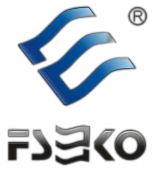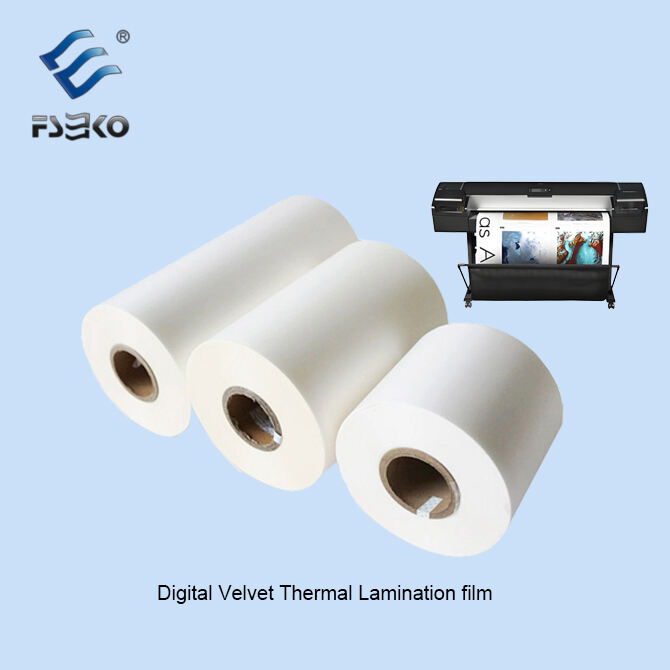katika uwanja wa nguvu ya uchapishaji na ufungaji, vifaa kwamba kuchanganya rufaa aesthetic na kazi versatility ni redefining viwango sekta. Miongoni mwa ubunifu huu, filamu ya veveti digital imeibuka kama mchezo-changer, captivating wabunifu, wazalishaji, na watumiaji wa mwisho sawa. Lakini ni nini hasa kinachofanya matumizi yake ya haraka katika masoko ya kimataifa? Acheni tuchunguze mambo ya kiufundi, mazingira, na ubunifu yanayochangia kuongezeka kwake.
1. Mageuzi ya Teknolojia ya Kufunika kwa Dijiti
Digital velvety filamu ni mali ya jamii pana ya filamu lamination joto , ambayo ni iliyoundwa ili kuongeza vifaa kuchapishwa kwa njia ya joto-alianzisha adhesion. Tofauti na laminates jadi, aina digital ni optimized kwa ajili ya utangamano na mchakato wa uchapishaji high-azimio digital, kuhakikisha ushirikiano bila mshono na mtiririko wa kazi ya kisasa.
"Velvety" texturea laini, matte kumaliza kukumbusha suedeni kupatikana kwa njia ya juu mipako mbinu. Mbali na kuboresha uwezo wa kugusa, vitambaa hivyo huimarisha uthabiti wa filamu hiyo na kuifanya iwe imara na isiharibike. Kwa viwanda kama vile ufungaji wa vitabu vya bei ghali, kufungia vitabu, na vifaa vya hali ya juu vya karatasi, ulinzi huo na kuvutia kwa hisi ni muhimu sana.
2. Kutimiza Mahitaji ya Kudumu
Katika enzi ambapo kupunguza plastiki ni kipaumbele cha kimataifa, digital velvety filamu anasimama nje kwa ajili ya ubunifu wake eco-fahamu. Viwanda kuongoza, kama vile Guangdong EKO Film Manufacture Co., Ltd., wamekuwa waanzilishi mbadala zisizo plastiki na composites recyclable ambayo kudumisha utendaji wakati kupunguza athari za mazingira.
Maendeleo muhimu ni pamoja na:
- Maandalizi yasiyo na plastiki : Kubadilisha misingi ya jadi ya polymer na vifaa vya biodegradable au compostable.
- Uzalishaji wa Kienerjia : michakato rahisi ambayo hupunguza taka na athari za kaboni.
- Uwezo wa Kuzima Tena : Filamu iliyoundwa kwa ajili ya kujitenga rahisi kutoka substrates kuchapishwa wakati wa kuchakata.
Vipengele hivi vinaambatana na vyeti kama vile FSC® (Chama cha Usimamizi wa Mashamba ya Miti) na REACH , kuhakikisha utii wa standadi za kimataifa za mazingira. Kwa vifaa vinavyotafuta kuwakaribisha watumiaji wenye fahamu juu ya mazingira, filamu ya kidijitali ya kuvutia inatoa hadithi yenye nguvu ya uendeshaji bila kushuki ubora.
3. Uwezekano katika Sekta Zote
Uwezo wa kubadilika wa filamu ya kidijitali ya kuvutia umewaongeza matumizi yake katika sekta mbalimbali:
- Upakaji wa Ulaya : Bidhaa za juu hutumia utando wake wa velvety kuunda uzoefu wa unboxing wa premium kwa vipodozi, vito, na vifaa vya elektroniki.
- Uchapishaji : Vifuniko vya vitabu na magazeti hutumia filamu hiyo ili kuongeza mwinuko na ubora wa picha, na hivyo kujitokeza katika masoko yenye ushindani.
- Ufungaji Wenye Kubadilika-Badilika : Aina zenye kukinza maji na zenye kukinza machozi huwalinda bidhaa zinazoweza kuharibika na wakati huohuo kudumisha uzuri wa bidhaa.
- Uchapishaji wa Kidijitali : Uwezo wa kutumika pamoja na vitomishi vya tinta na vya lasa huleta uwezo wa kubadilisha kama hitaji, kupunguza muda wake kwa maombi madogo.
Matumizi haya yanayotegemeana kwenye sekta zote yanawashirikisha jukumu la filamu kama suluhisho kwa kiasi kikuu kwa changamoto za uvunikwaji wa kisasa.
4. Ufanisi wa Ufundi na Ubunifu
Mafanikio ya filamu ya velvety ya digital ni msingi wa R & D isiyo na huruma. Makampuni kama EKO kuwekeza sana katika:
- Sayansi ya Vifaa : Kuendeleza mipako ambayo hupatanisha upole na nguvu.
- Optimization ya Mchakato : Kuhakikisha adhesion thabiti katika substrates, kutoka karatasi kwa vifaa synthetic.
- Vifaa Synergy : Kushirikiana na wazalishaji wa vyombo vya habari digital ili kuboresha utangamano na ubora wa pato.
Kwa mfano, EKOs DTF (Moja kwa Moja kwa Filamu) teknolojia inaunganisha kumaliza velvety katika uchapishaji nguo, kupanua uwezekano wa ubunifu kwa ajili ya mavazi na mapambo ya nyumbani. Ubunifu kama huo unaonyesha uwezo wa filamu kuvuruga mifano ya jadi ya utengenezaji.
5. Wakati Ujao wa Filamu ya Veluvi ya Dijiti
Kama masoko mahitaji ya haraka, kijani, na ufumbuzi zaidi binafsi, digital velvety filamu ni tayari kwa ukuaji zaidi. Mwelekeo unaotarajiwa ni pamoja na:
- Mipako ya Akili : Filamu na sensorer iliyoingia au vipengele vya kupambana na bandia.
- Kuweza Kutumia Tena Vitu Vilivyoharibika : Mifano ya uchumi mviringo ambapo filamu ni re-kuelekezwa katika bidhaa mpya.
- Kuweka Viwango Ulimwenguni Pote : Kanuni zilizopatanishwa ili kuboresha biashara ya kimataifa.
Kwa ajili ya biashara, kukaa mbele ina maana ya kushirikiana na wauzaji ambao kipaumbele uvumbuzi na uendelevu falsafa kuonyeshwa na viongozi wa sekta kama EKO.
Hitimisho
Si ajabu kwamba filamu ya rangi ya zambarau inajulikana sana. Ni mfano wa kuunganishwa kwa teknolojia ya hali ya juu, uwajibikaji wa mazingira, na uhuru wa ubunifu. Kama kuongeza brand hisia, kulinda bidhaa, au kupunguza alama ya mazingira, faida zake resonate katika minyororo ya thamani.
Kama mazingira ya sayansi ya vifaa yanabadilika, jambo moja ni wazi: filamu ya velvety ya dijiti sio mwenendo tu lakini jiwe la msingi la suluhisho la uchapishaji na uchapishaji wa kizazi kijacho. Kwa wadau ambao wanataka kuhakikisha shughuli zao za baadaye, kukumbatia uvumbuzi huu ni lazima ya kimkakati na ya maadili.
Kwa kuelewa nuances yake ya kiufundi, sifa ya uendelevu, na uwezo wa soko, biashara inaweza kufungua fursa mpya katika mazingira ya ushindani zaidi. Swali si tena kwa nini filamu ya velvety digitallakini hivi karibuni unaweza kuunganisha katika mtiririko wako wa kazi?


